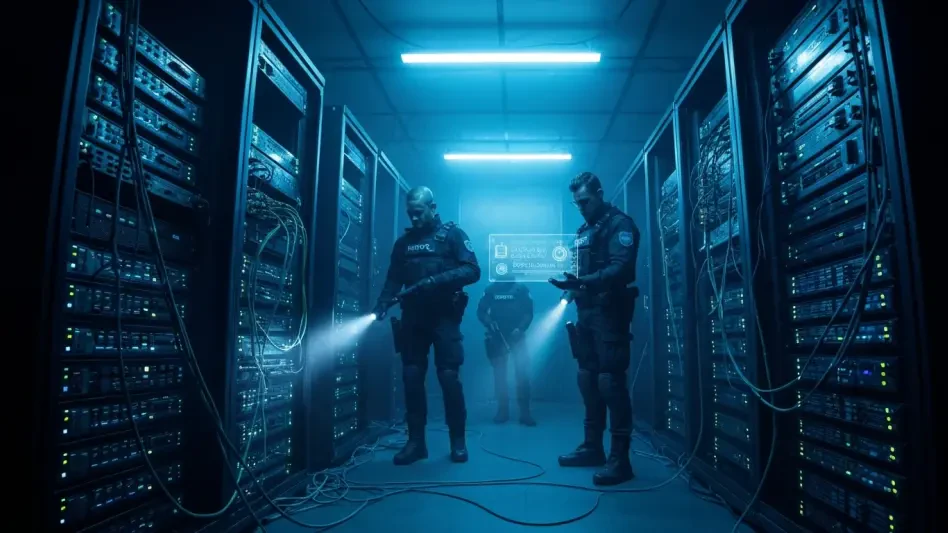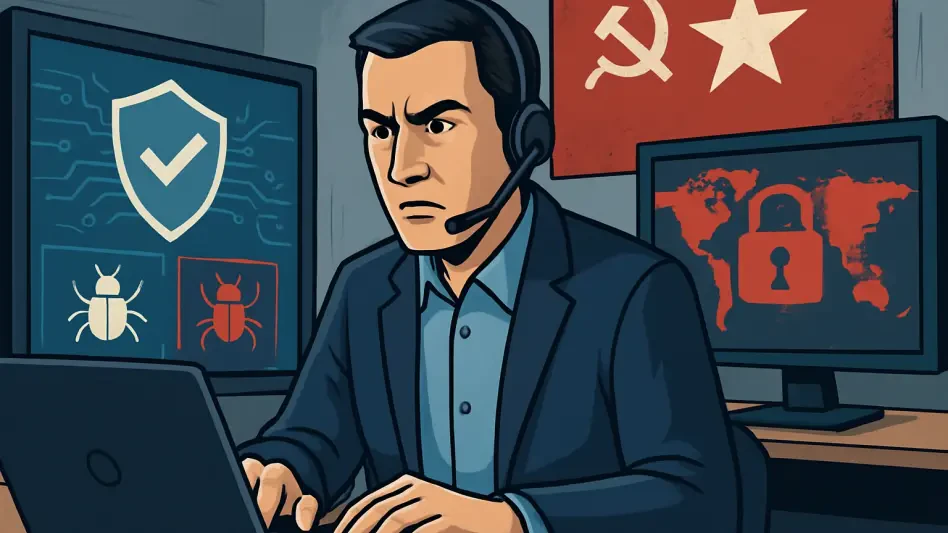As cyber threats continue to evolve at an alarming pace, the urgency for robust legislative frameworks to protect national infrastructure has never been more critical, especially with adversaries exploiting vulnerabilities faster than ever before. The ability to share threat intelligence between government and private entities remains a cornerstone of defense strategies. At the heart of this effort lies a pivotal piece of legislation, set to expire on September 30 of this year, which has facilitated voluntary information exchange for nearly a decade. During the Black Hat USA conference held on August 7, officials from the U.S. Cybersecurity and Infrastructure Security Agency (CISA) expressed strong confidence in congressional support for extending this vital law. Their optimism, echoed by industry experts, paints a picture of a unified push to maintain a critical tool in the fight against digital dangers. This discussion not only highlights the importance of legislative continuity but also underscores broader efforts to strengthen cybersecurity resilience across multiple fronts.
Legislative Outlook for Cybersecurity Collaboration
Confidence in Renewal of Key Legislation
The impending expiration of a significant cybersecurity law has sparked intense focus among policymakers and agency leaders alike. This legislation, which enables voluntary sharing of threat intelligence between organizations and the government, is seen as indispensable in a landscape where cyber adversaries adapt with alarming speed. At the recent Black Hat USA conference, CISA officials, including Executive Assistant Director Christopher Butera and Chief Information Officer Robert Costello, voiced a firm belief that Congress will extend the law for several more years. Their confidence stems from the recognition of how rapid information exchange has thwarted countless attacks by allowing preemptive action. Industry voices, such as Cynthia Kaiser, Senior Vice President at Halcyon and a former FBI official, reinforce this sentiment, noting the law’s proven value in safeguarding national interests. The consensus points to a shared understanding that letting this framework lapse would create dangerous gaps in defense mechanisms at a time when unity is paramount.
Implications of Legislative Continuity
Beyond the immediate assurance of renewal, the potential extension of this cybersecurity law carries broader implications for national security strategies. A prolonged authorization would signal to both public and private sectors that the government remains committed to fostering collaboration against digital threats. Such a move could encourage more organizations to participate in intelligence sharing, knowing that a stable legal foundation supports their efforts. Additionally, an extended timeframe—potentially spanning from this year to several years ahead—would provide CISA and its partners the opportunity to refine protocols and address emerging challenges, like the rise of AI-driven attacks. This continuity also ensures that resources are not diverted to lobbying for new legislation, allowing focus to remain on operational enhancements. The ripple effect of this decision could strengthen trust between stakeholders, creating a more cohesive front against adversaries who exploit hesitation or uncertainty in policy frameworks.
CISA’s Strategic Priorities and Innovations
Sustained Investment in Vulnerability Management
Amid discussions of legislative support, CISA’s commitment to foundational programs like the Common Vulnerabilities and Exposures (CVE) initiative, managed by MITRE, stands out as a key priority. At the Black Hat USA conference, agency leaders reassured attendees that funding for this critical program would remain secure, with plans to elevate its impact through technological advancements. Butera emphasized a shift toward quality over quantity, leveraging automation to accelerate vulnerability remediation processes. This approach reflects a broader trend of prioritizing scalable tools to tackle the sheer volume of threats facing modern networks. By investing in such innovations, CISA aims to ensure that organizations can address weaknesses before they are exploited, maintaining a proactive stance in an increasingly hostile digital environment. The agency’s dedication to enhancing the CVE program underscores its role as a linchpin in national efforts to catalog and mitigate risks systematically.
Advancing Tools and Support for Local Defenses
In parallel with sustaining existing programs, CISA is also rolling out new initiatives to bolster cybersecurity at state and local levels. One notable development is Thorium, a recently launched platform for malware and forensic analysis, introduced just before the Black Hat USA event. This tool promises to enhance the ability of smaller entities to dissect and respond to complex threats. Additionally, a $100 million cyber grant has been allocated to support state and local governments in fortifying their defenses, a move seen as vital given their often-limited resources. Plans to streamline subscription processes for the Cyber Hygiene (CyHy) service, which scans public-facing endpoints for vulnerabilities and serves over 11,000 users, further demonstrate a focus on accessibility. These efforts highlight CISA’s recognition that national security begins at the community level, where breaches can have cascading effects. By equipping these entities with cutting-edge resources, the agency seeks to create a more resilient cybersecurity ecosystem nationwide.
Addressing Workforce Challenges with Resilience
Workforce stability remains a concern for CISA, especially in light of past narratives surrounding significant staff reductions during previous administrations. However, agency leaders have pushed back against exaggerated claims of decline, with Costello invoking a literary reference to suggest a forward-moving trajectory rather than regression. Butera acknowledged some voluntary departures but stressed the retention of a highly skilled core team capable of navigating current challenges. This framing aims to instill confidence in the public and stakeholders that CISA’s operational capacity remains robust despite historical setbacks. The emphasis on talent retention and strategic redirection reflects an adaptive mindset, ensuring that expertise is not lost amid transitions. By focusing on resilience rather than dwelling on past difficulties, the agency positions itself as a dependable leader in the cybersecurity domain, ready to tackle evolving threats with a dedicated workforce.
Reflecting on a Path Forward
Looking back, the discussions at the Black Hat USA conference revealed a landscape where optimism and determination shaped CISA’s response to looming legislative deadlines. The agency’s leadership successfully conveyed a narrative of strength, from their assured stance on the extension of a crucial cybersecurity law to their unwavering support for programs like CVE. New tools like Thorium and substantial grants for local entities marked significant strides in broadening the reach of protective measures. Even workforce challenges were addressed with a tone of resilience, countering past concerns with a focus on retained talent. As these efforts unfolded, they laid the groundwork for future collaboration and innovation. Moving ahead, stakeholders must advocate for sustained congressional backing, invest in scalable technologies, and prioritize grassroots defenses to ensure that the momentum gained does not falter in the face of increasingly sophisticated cyber threats.








